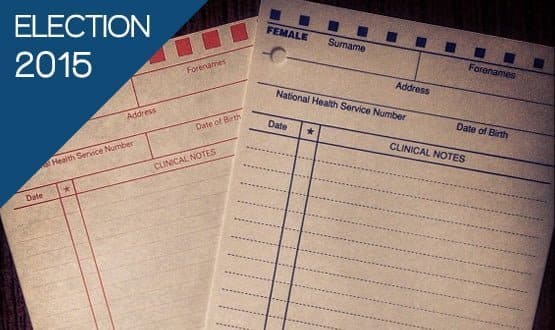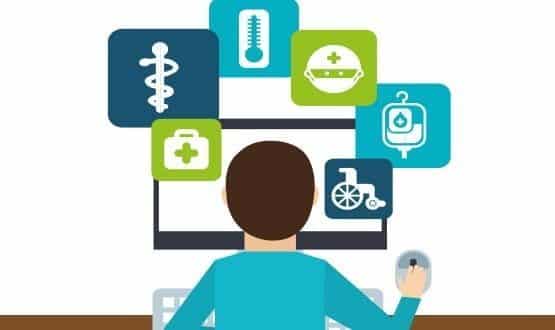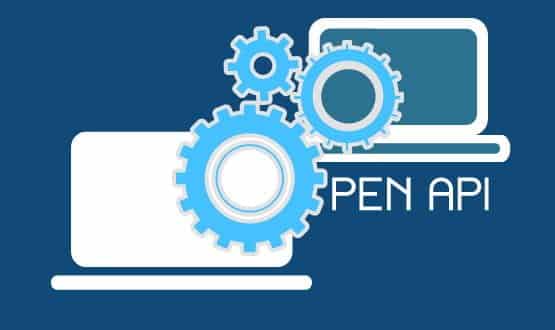Records come round again
- 22 April 2015

At midday on a sunny Tuesday, my doctors’ surgery is unrecognisably quiet as I approach the reception desk.
When I ask to register for patient access the receptionist immediately hands me a form. I dutifully sign and tick the box saying I want access to online appointment booking and repeat prescriptions. "But where is the tick box for records access?"
The question is greeted with a look of confusion, but after some discussion behind a door I am told I would need to request that in writing. Also, that it will take up to a month for the records to be available.
An hour later, I am logged into my laptop. Along with my upcoming appointments and repeat prescriptions, I can click on a link to 'view my medical record'. It is the bare basic data from my Summary Care Record and, in my case, not very exciting – but there it is.
Was this the plan?
When Conservative Party leader David Cameron said, during the 2010 general election campaign, that patients would be “able to check your health records online in the same way that you do your bank account” he probably envisaged more than this.
However, the government was forced to scale back its manifesto ambitions, first to access to the GP record and then to a subset of that record – the information in the SCR.
Under the latest GP contract, though, practices were required to offer transactional services such as electronic appointment booking and ordering of repeat prescriptions by the end of March this year.
Figures released in January reveal that more than 90% were offering booking and repeat prescriptions, while around one third were enabling patients to view a summary record.
NHS England is confident of a late, big push towards the deadline. Whether this is true will not be known until the next official figures are released in May – after the general election.
Is it enough?
Since the technology to enable access has been available for more than a decade, long-term campaigners would argue that things have not moved nearly fast enough.
However, most would agree that GPs have come a long way over the past few years. At healthcare conferences in 2013, the patient access debate was often hijacked by questions about security and workload.
While these are still real concerns, the conversation today is more about exactly how it should be done, not whether it should be done at all.
Dr Brian Fisher, GP and co-director of patient access provider PAERS, says things have been moving fast behind the scenes over the past year or so; even if this is yet to make a tangible difference for patients.
“For many years, record access has been seen as the devil’s work by practising GPs, but I think the government was brave and right to just set a deadline and say ‘this is going to happen’; because the evidence is good that it helps patients and doesn’t disrupt practices,” he tells EHI News.
“We do worry about issues in general practice, but when it comes down to it we are practical people. We think about how to implement things and make them work to maximise the benefits and minimise the risks.”
Fisher feels confident that the drive towards patient access will continue no matter who finds themselves in power following the May election. “There has to be a publicity campaign to let people know about it. It really is a big cultural shift, not just for practices, but for patients,” he argues.
But despite promises from NHS England to fund such a campaign, he has seen no signs of one so far. “It will happen very slowly, but lots of IT developments took a long time to get off the ground – like texting or booking appointments online.
“I’m sure it will happen, but the evidence is that if clinicians promote it then it goes like a bomb, while if they don’t it takes a very long time.”
Labouring way back when
Digital access to medical records is a political pledge that predates the coalition government. The 2001 Labour Party manifesto promised to: “Give every citizen a personal smartcard containing key medical data, giving access to their medical records.”
As enthusiasm for smartcards dwindled, patients were promised access to their GP records via the HealthSpace website, as part of the new Labour government’s general enthusiasm for NHS ‘reform’ and ‘modern’ and ‘personal’ services.
In what was to become a repeating pattern, HealthSpace’s remit was then watered down to include only access to the SCR, contributing to disastrously low uptake amongst patients. Expansion plans were shelved in summer 2009 and it was finally killed off in 2012.
The current Labour manifesto makes almost no mention of the use of IT in the NHS and makes no commitments regarding patient access.
However, a Labour spokesperson told EHI News the party plans to "allow patients and carers to access their records and communicate with services online” – this time to support the shift towards integrated care and “making it easier for people to manage their own conditions and stay at home for longer."
It lives!
As HealthSpace struggled, the Conservative manifesto in 2010 promised an “information revolution” for the NHS, with more published data on performance and “patients in charge of their own health records.”
In 2013, the NHS information strategy made a more concrete promise; that all patients that wanted it should have online access to their GP record by 2015. This became access to the SCR information, with more to come next year.
The latest Conservative manifesto reiterates the promise to give people “full access” to their electronic health records, while the Liberal Democrats are promising to fund a digital revolution in the NHS. This includes making more doctor appointments and repeat prescriptions available online and encouraging more patients to contact their doctors by Skype.
What do patients want?
While politicians are busy setting targets and GPs have switched on the functionality, the reality is that online access is still nowhere near a reality for the vast majority of people.
From a total 57 million patients, around 760,000 were signed up to electronically view their GP summary in January this year, and in the final three months of 2014, these records were accessed 50,000 times.
One practice that is contributing disproportionately to those is figures is Haughton Thornley Medical Centre, where Dr Amir Hannan has been providing full electronic records access for his patients for the past decade.
“We need to expose the reality within the dream world. My patients have been doing this for ten years now and you are still talking about how it’s great that we have got summary information," he says.
Hannan questions the ability of the centre to impact what is happening on the ground, arguing that the next stage in developing the patient access agenda must involve empowering patients.
He spends a lot of time promoting the benefits of online records access on Twitter and other social media outlets in the belief that if people see what is happening at his practice, they will ask their own GPs why they are not doing the same.
However, the long-time enthusiast admits that while GPs struggle with an ever increasing workload, it is not surprising that they are not prioritising patient access.
With budgets tightening it is also an issue that there is no funding for providing the service, even though it costs money to implement. However, his experience is that patient access can reduce costs and improve quality and safety.
More than one third of patients at his surgery are able to access their full medical record online and a recent study showed an 11% reduction in use of GP appointments by patients with records access.
“Empower the patient and you will be surprised at how things that are unaffordable, can become affordable,” says Hannan. “This is not about the IT, it’s about the culture.”



